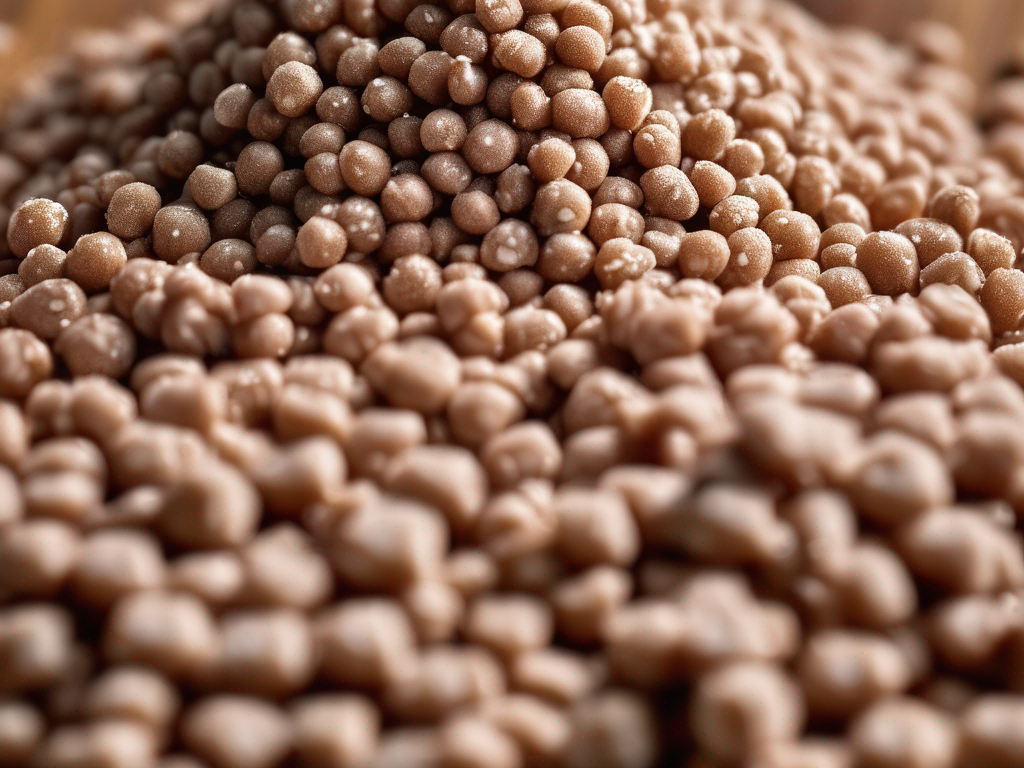
How to Prevent Mold on Buckwheat in Storage
Get Your Free Food Safety Cheat Sheet
30 most common foods with instant answers. Print it and stick it on your fridge—completely free!
How to Prevent Mold on Buckwheat in Storage
Buckwheat is a nutritious and versatile grain that is popular in many cuisines around the world. However, like all grains, buckwheat is susceptible to mold growth if not stored properly. Mold not only affects the taste and quality of buckwheat but can also pose health risks if consumed. In this blog post, we will discuss practical tips on how to prevent mold on buckwheat in storage. (Buckwheat)
Understanding Mold Growth on Buckwheat
Mold is a type of fungus that thrives in warm, damp environments. When buckwheat is exposed to moisture and warmth, mold spores can quickly multiply and spread, leading to the formation of mold colonies. Mold growth on buckwheat can produce toxins known as mycotoxins, which can be harmful if ingested.
Common Causes of Mold on Buckwheat
- High humidity: Excessive moisture in the storage area can create an ideal environment for mold growth.
- Poor ventilation: Inadequate airflow can trap moisture around the buckwheat, promoting mold development.
- Contaminated storage containers: Using dirty or moldy containers to store buckwheat can introduce mold spores to the grain.
Tips for Preventing Mold on Buckwheat
To ensure the freshness and safety of your buckwheat, follow these practical tips to prevent mold growth during storage:
1. Proper Storage Conditions
- Store buckwheat in a cool, dry place away from direct sunlight.
- Use airtight containers or resealable bags to protect buckwheat from moisture and air exposure.
- Avoid storing buckwheat near sources of heat or humidity, such as the stove or dishwasher.
2. Regular Inspection
- Check stored buckwheat regularly for any signs of mold, such as a musty odor, discoloration, or visible growth.
- Discard any buckwheat that shows signs of mold contamination to prevent the spread to other grains.
3. Moisture Control
- Ensure the storage area is well-ventilated to prevent moisture buildup.
- Consider using desiccants or moisture-absorbing packets in the storage containers to reduce humidity levels.
- If storing buckwheat in bulk, rotate stock regularly to prevent moisture accumulation.
4. Cleaning and Maintenance
- Clean storage containers thoroughly before transferring buckwheat to prevent mold contamination.
- Avoid mixing old and new batches of buckwheat in the same container to minimize the risk of mold transfer.
- Wash containers with hot, soapy water and allow them to dry completely before refilling with buckwheat.
5. Temperature Control
- Maintain a consistent temperature in the storage area to prevent fluctuations that can promote mold growth.
- Ideally, store buckwheat in a temperature-controlled pantry or cupboard to ensure optimal conditions for long-term storage.
Conclusion
By following these practical tips for preventing mold on buckwheat in storage, you can ensure that your grains remain fresh, safe, and free from mold contamination. Proper storage conditions, regular inspection, moisture control, cleaning, and temperature control are key factors in preserving the quality of buckwheat and protecting it from mold growth. Remember that moldy buckwheat should never be consumed, as it can pose health risks. With careful attention to storage practices, you can enjoy the nutritional benefits of buckwheat in your favorite recipes without the worry of mold contamination. Learn more about buckwheat and incorporate it into your diet with confidence. (Buckwheat)
Related Posts
Here are some other articles you might find helpful:
Authoritative Food Safety References
These agencies and university labs inform every tip and health precaution we publish.
USDA FoodKeeper – Cold Storage Guidelines
Official refrigerator, freezer, and pantry timelines maintained by the U.S. Department of Agriculture.
Visit USDA FoodKeeperFDA Produce Safety Rule & Grower Guidance
Field-to-fridge handling practices that prevent contamination of fruits, vegetables, and leafy greens.
Visit FDA Produce SafetyCDC Foodborne Illness Prevention Hub
Surveillance-backed guidance on pathogens, symptoms, and steps to reduce foodborne illness risk.
Visit CDC Food SafetyUC Davis Postharvest Technology Center
University research detailing optimal storage atmospheres for produce after harvest.
Visit UC Davis PostharvestPenn State Extension – Home Food Preservation & Safety
Peer-reviewed extension bulletins on safe canning, chilling, and reheating practices.
Visit Penn State ExtensionGet Your Free Food Safety Cheat Sheet
30 most common foods with instant answers. Print it and stick it on your fridge—completely free! Want more? Upgrade to the complete guide with 70+ foods.
Scan your food directly and get instant safety info using our AI-powered camera feature.